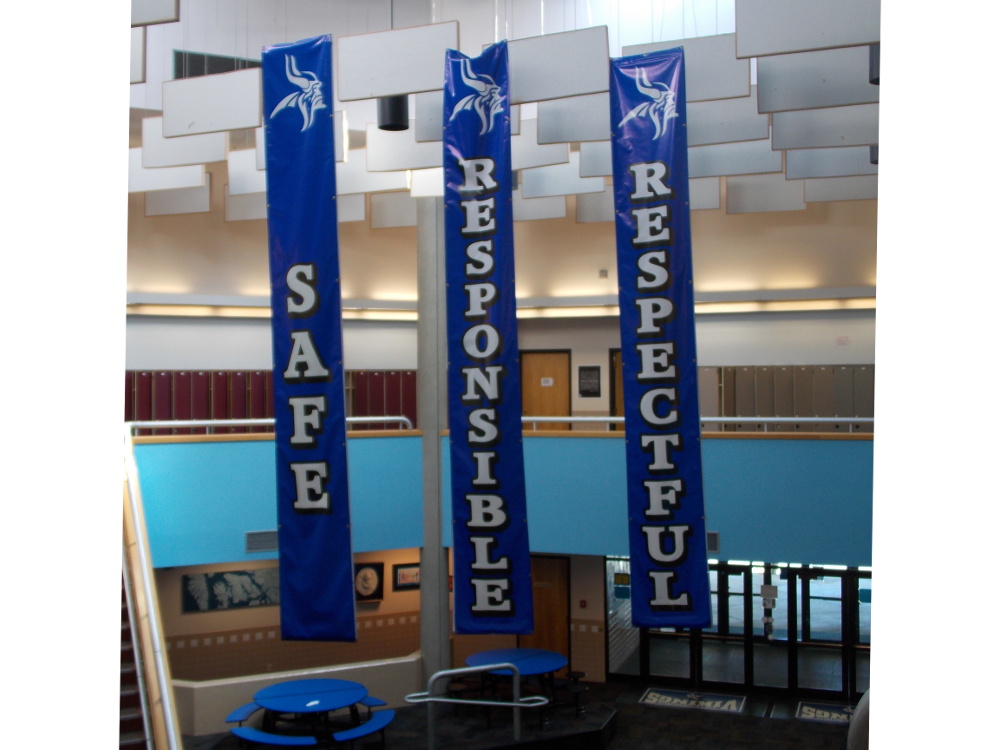A new state system of evaluating school performance puts Petersburg’s three schools in the top 25 percent of schools in Alaska. All three schools earned a “universal support” designation under the state’s System for School Success, a new tool for evaluating schools. The evaluation looks at proficiency in math and English language, academic growth, absenteeism, graduation rates and how different groups of students perform in school.
The new evaluation system gives schools overall index scores and one of three designations. Two of those designations identify areas where schools need to improve and could mean funding support to make those improvements. But Petersburg’s three schools don’t fall in those two categories. For index scores Mitkof Middle School was rated a 70, Petersburg High over 65 and Rae C. Stedman over 62 on a scale of zero to 100.
“The top 25 percent of schools in the state of Alaska had overall school index values ranging between 59.45 and 98.99 on a zero to 100 point scale,” said Bob Williams, the director of educator and school excellence for the state’s Department of Education. “So that means that Petersburg, all of their schools are in the top 25 percent of index values for the state of Alaska.”
Williams cautioned that those index scores are not rankings or grades, but are just meant to show where a school can improve.
“You know Alaska’s accountability system, the System for School Success, is designed to celebrate success and identify areas where additional support is needed, with the end goal of increasing achievement for all students,” Williams explained. “I’d say just as assessment evaluates how students are progressing towards proficiency in the standards, the System for School Success evaluates a schools progress towards system-wide effectiveness.”
It’s the first year for these types of ratings from the state. This new system is Alaska’s response to the Every Student Succeeds Act, the 2015 federal education law that replaced the No Child Left Behind Act. Williams said this accountability system looks at more factors for school performance compared to past systems required by federal law.
Petersburg school superintendent Erica Kludt-Painter thinks the evaluation system is a step in the right direction.
“No system is perfect,” Kludt-Painter said. “I will say that up front. It’s difficult I think to put a number designation to any school because we’re talking about children and people and lots of factors so that’s always a little but difficult.”
Kludt-Painter explained one positive of this new system is that it tries to measure student growth.
“The reality of helping a child who might be really below proficient for a number of reasons, could be a lot of reasons, in one year trying to accomplish all of that might not be possible,” she said. “But they’re trying to acknowledge that they want to allow schools to show growth. I do think that is an important part of the legislation that’s different and I appreciate that focus.”
But she said one factor that is difficult for Petersburg is the attendance measure. That looks at students who are chronically absent, or miss 10 percent of school days. Kludt-Painter said students in the Petersburg district can be above that level of missing school, especially with travel to activities.
“I think on the surface a lot of times statisticians think that’s a good metric,” Kludt-Painter said. “It’s a really difficult one here because we don’t necessarily count kids, they’re not unexcused for example if a high school kid or even a middle school kid is traveling for a school sponsored activity, you don’t hold that against them in the sense that they’re traveling for a school activity.”
Kludt-Painter thinks there’s always room for improvement at Petersburg schools and she’s hopeful the state’s new school evaluation system will be improved over time.










